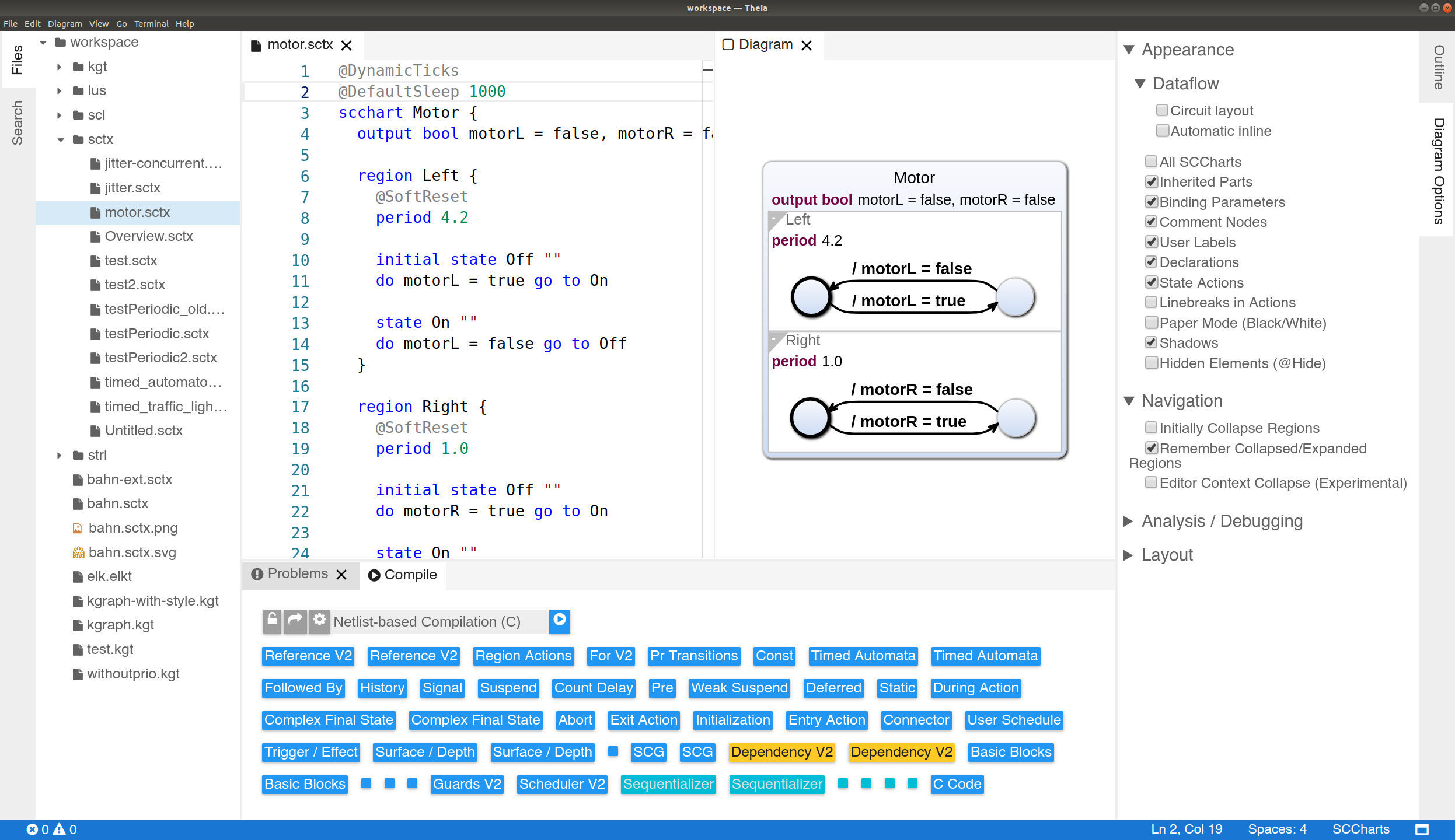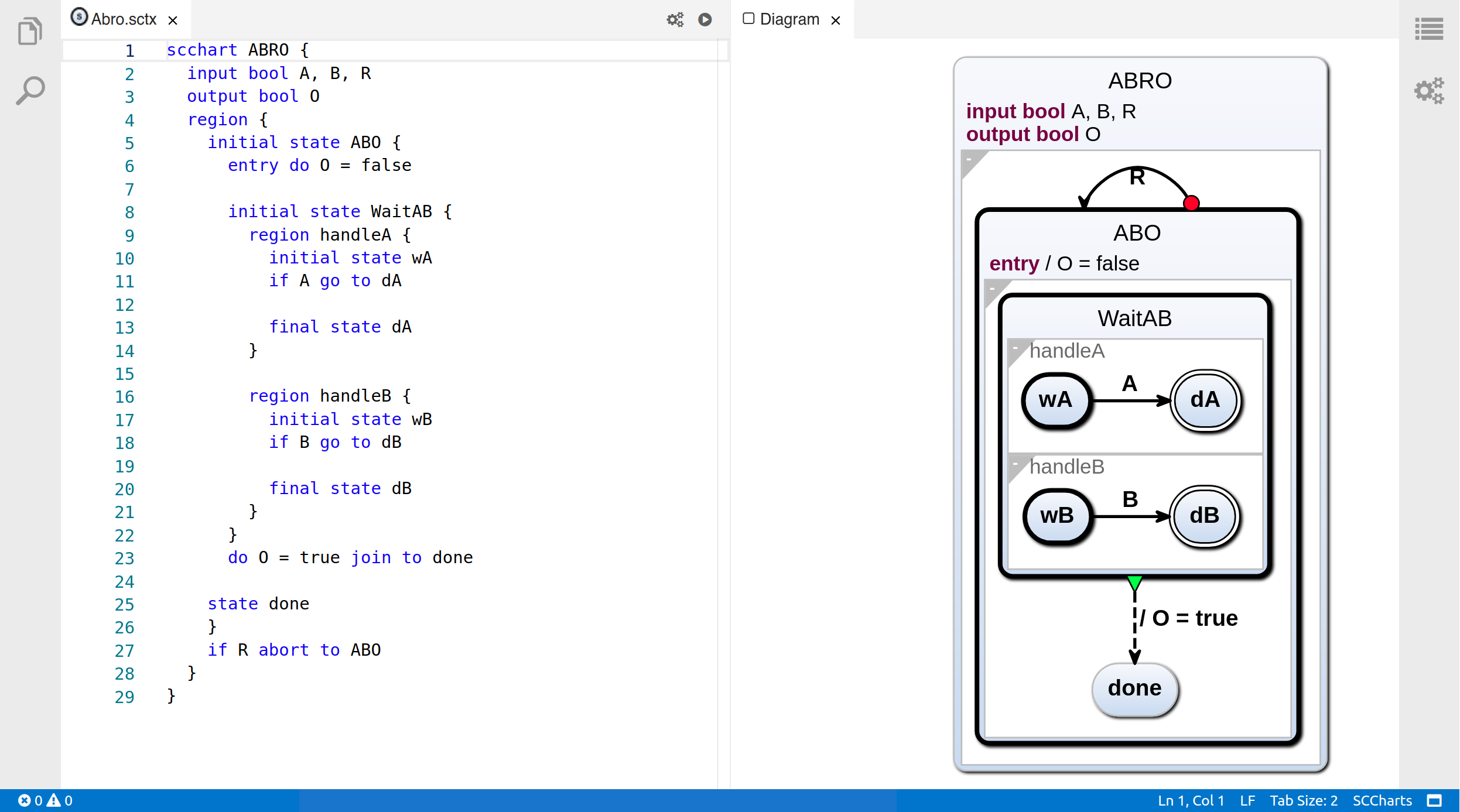KEITH[1][2] is an IDE based on KIELER[3]. It uses KIELER as a language server to provide rich client features for SCCharts[4], Lustre, Esterel, ELK, KGraph, and some intermediary languages.
KEITH runs in a browser.
You can download the nightly build for KEITH here (currently no working build for MacOS).
[1] Sören Domrös. Moving Model-Driven Engineering from Eclipse to Web Technologies, November 2018
[2] Niklas Rentz. Moving Transient Views from Eclipse to Web Technologies, November 2018
[3] Reinhard von Hanxleden, Hauke Fuhrmann, and Miro Spönemann. “KIELER—The KIELIntegrated Environment for Layout Eclipse Rich Client”. In:Proceedings of the Design,Automation and Test in Europe University Booth (DATE ’11). Grenoble, France, 2011.
[4] Reinhard von Hanxleden, Björn Duderstadt, Christian Motika, Steven Smyth, Michael Mendler, Joaquín Aguado, Stephen Mercer, and Owen O’Brien. SCCharts: Sequentially Constructive Statecharts for Safety-Critical Applications. In Proc. ACM SIGPLAN Conference on Programming Language Design and Implementation (PLDI’14), Edinburgh, UK, June 2014.

